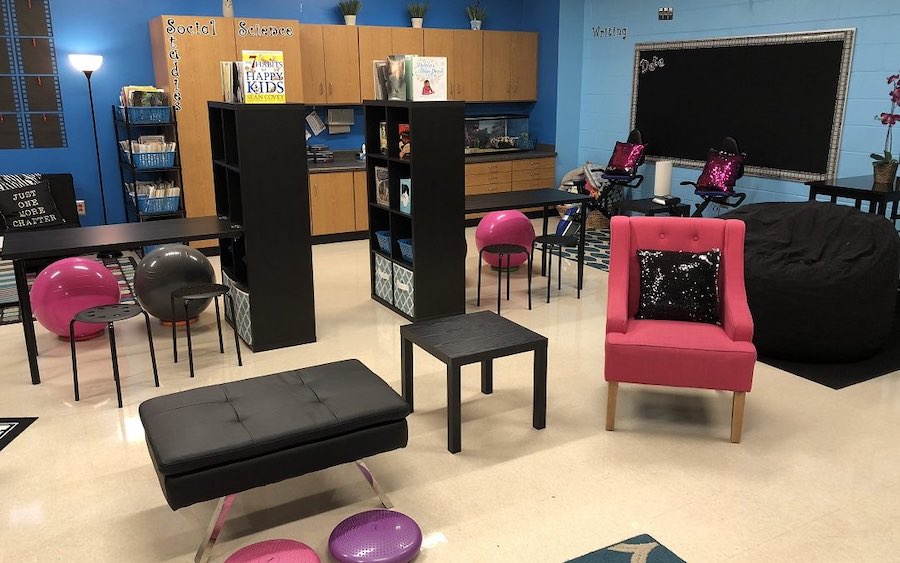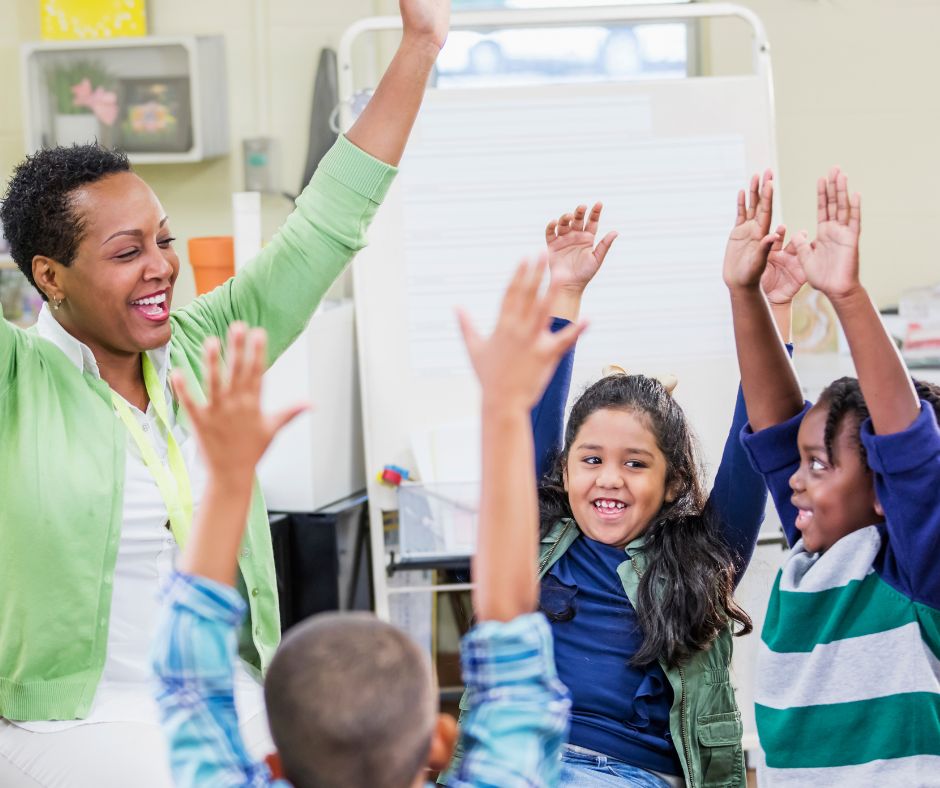
How Furniture Can Affect Learning
Educators are beginning to show more interest in furniture and how classroom setup may impact learning. In some schools, traditional individual desks have been replaced with rectangular tables and chairs. In other schools, teachers are introducing non-traditional seating including bean bag chairs and yoga balls.
These changes are one way to respond to students’ different learning styles and other needs and preferences. Some students learn well in a traditional desk, while others feel more comfortable lounging.
Michelle Clark, a math content specialist in Atlanta, GA, found that “the more comfortable the kids are, the more apt they are to stay engaged.”
Melissa Hester, a 5th-grade teacher at Monaview Elementary in Greenville, SC, explains, “At this age (10 and 11), the majority of students need some sort of outlet for all the pent-up physical energy they can’t get out the rest of the day. The ability to jump on a yoga ball helps them move while they learn.”
BENEFITS OF NON-TRADITIONAL SEATING
There are only a few studies on non-traditional seating, but the initiatives and pilot programs that have been studied show positive results.
One systematic review conducted in several countries and published in the Journal of Ergonomics found “a clearly positive effect of school furniture dimensions on students’ performance and physical responses.” Broken down into student numbers, “64% presented positive results, i.e. proven effects; 24% presented negative effects or no change/effect; and the remaining 12% showed an unclear effect.”
Hester has been using non-traditional seating for two years and highly recommends it to other teachers. She was one of the first teachers at her school to institute a variety of seating arrangements in her classroom, and other educators followed suit.
“At Monaview, four out of the five 5th grade classrooms use alternative seating. Last year we were the only grade level that showed 100% academic growth in reading and math.”
DISADVANTAGES OF NON-TRADITIONAL SEATING
One challenge to non-traditional seating is managing talkative students. Children who are very social may be distracted if they choose to sit too close to other students. However, flexible seating means the teacher can move the student and his or her seat to a different location in the classroom.
TYPES OF NON-TRADITIONAL SEATING
Educators can introduce many types of non-traditional seating into their classrooms. The furniture company KI designed the Ruckus Chair with the non-traditional classroom in mind. The chair’s wheels allow for movement, and the curved backs allow children to shift directions quickly and easily to participate in all classroom activities.
Another popular furniture design is the Nugget. The cushions and pillows of this couch can bend and fold for various seated positions depending on the classroom activity or user’s mood.
Other examples of non-traditional classroom furniture include:
- Backless Stools
- Bean Bag Chairs
- Bucket Seats
- Chairs with Wheels
- Couches
- Exercise Bikes
- Foldable Camp Chairs
- Ottomans
- Sit-Stand Furniture
- Stability Cushions
- Tables of Different Heights
- Tilt Tables
- Yoga Balls
HOW TO ADOPT NON-TRADITIONAL SEATING
If you are interested in adopting non-traditional seating in your classroom, Hester recommends starting in phases because it can be an expensive transition.
She started with rectangular tables and a variety of chairs for students to choose from, including less expensive foldable camp chairs and yoga balls. Next, she removed standard tables and incorporated tables with attached bookshelves, as well as couches, exercise bikes, ottomans, and stability cushions. Lastly, she added two nuggets.
As for managing which children can sit in which seats, there are several options. At the start of each day, Hester allows each student to choose which seat he or she would like for the day. It is a first-come, first-serve policy, but that hasn’t caused any problems.
She advises, “The key to any flexible seating environment is setting expectations and practicing what that looks like. At the beginning of the year, there is a lot of movement, but pretty quickly students understand what works best for them and continue to choose that seat consistently.”
Other teachers with non-traditional seating may use a rotating chart and switch students automatically every 10 days or so. Educators should adopt practices that work well for their classrooms and students.





